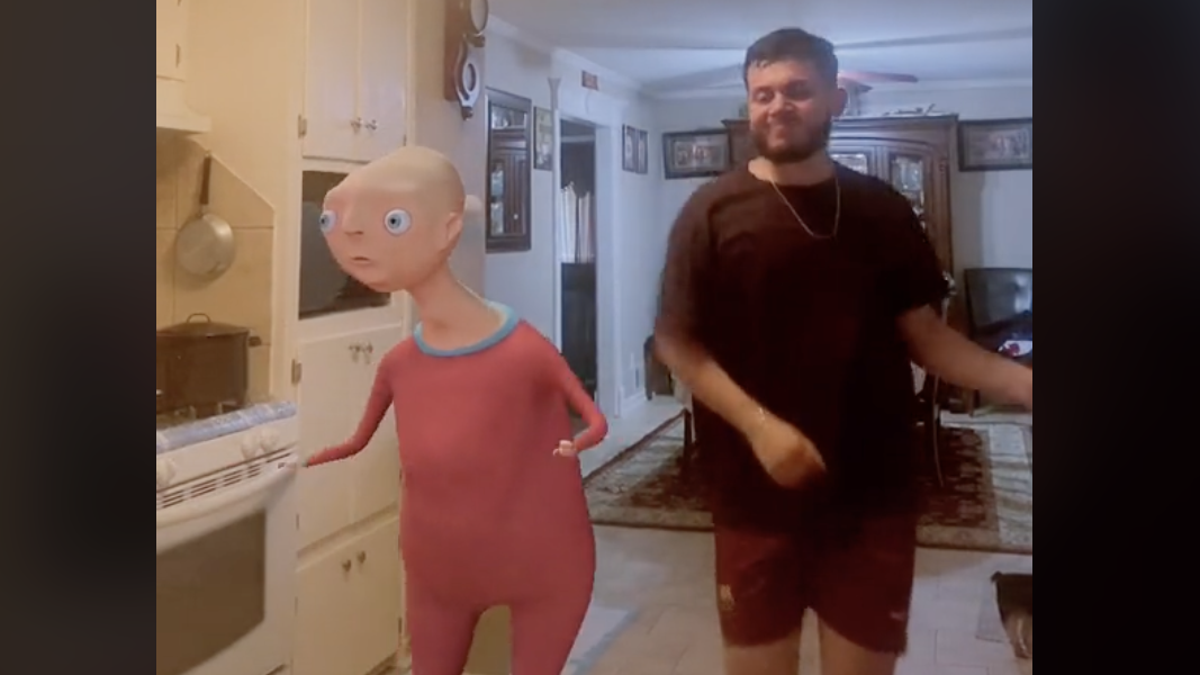The Out-of-Touch Adults' Guide to Kid Culture: Who (or What) Is Horace?
This week’s roadtrip through the collective unconscious of people who are much younger than me takes us to some strange tourist traps. There’s a dancing baby-man named “Horace,” makeup recommendations that get extremely personal, and a couple of stories...


This week’s roadtrip through the collective unconscious of people who are much younger than me takes us to some strange tourist traps. There’s a dancing baby-man named “Horace,” makeup recommendations that get extremely personal, and a couple of stories that illustrate Generation Z’s conflicted feelings about smiley faces: Are they friendly? Are they terrifying? Are they both?
Meet Horace: the grotesque dancing baby of the TikTok generation
Every generation gets the grotesque dancing baby it deserves. The early internet had, well, Dancing Baby. The TikTok generation has Horace. Created by animator Jackson Q. Gray, Horace began his/its life in 2020 on Instagram, as a filter you could slap into a post. But back then he was nude. Instagram pulled the going-viral filter because they saw it as “content of an adult or sexual nature.” You can’t keep a good baby-man-thing down though, and Horace has risen from the dead on TikTok like Jesus. Unlike our Lord and Savior, though, Horace is now wearing a red onesie. He stars in videos like this one, this one, and this one. Horace has become so popular that he’s being coopted by “How do you do, fellow kids” style corporate social media streams like this one from O’Reilly’s Auto Parts.
I’m too old to be even mildly amused by Horace, but maybe your blood isn’t made of ice water and you want to join 26 million other people on the Horace hashtag where you can look at videos of a stupid dancing baby all damn day.
Makeup recommendations get confessional
If you don’t pay attention to the part of the internet devoted to recommending cosmetics, you are missing out. Lately, beauty posters have been inserting bleak confessions into product recommendation videos, and it’s marvelous. Someone will post an innocent query like, “What face wash do you use?” And they receive videos like this in response from user Kelsey Soles who says, “I personally will never see human connection again, but I use Cetaphil.” Looking for a summer lipstick shade? Preraphaelitequeen says, “Personally, I don’t know how to enjoy being in a relationship without constantly preparing for it to end. Glossier in the shade Zip is one of my favorite coral shades.” Strange-connections-that-somehow-makes-sense is what the internet was made for. Funny, smart, and unexpected, this is the opposite of a dancing baby meme.
G/O Media may get a commission
Warnings from TikTok
Because everything on the internet is bad and will kill you, here is part 3,119 of my 8,320-part series “Do not do these things you see online”:
Do not drink excessive amounts of vinegar: As determined here, drinking carbonated vinegar does not taste like Coke, but it is apparently as bad for your teeth as drinking Coke. Do not make fake Johnny Depp accounts on social media: It makes the real Johnny Depp very mad and sad, and he has deep emotions that are totally important.Do not put ice on your cat.Emojis at work for younger people
If I were in grad school for linguistics, I would be writing my dissertation on how people of different generations use emojis. One of my areas of research would be an analysis of emoji use on work-related platforms like Slack or Microsoft Teams. So much raw data!
This video from morefrejenal states she uses smileys at her first corporate job to “not come off as rude.” Mission accomplished, but does it make her come off as childish or unserious instead—at least to geezers like me? It’s a hassle for everyone to navigate work communication and maintain a “work persona” that is so different from their true selves, and it’s particularly hard for young women I imagine, but I worry that Gen Z’s communication style might not be making the impression intended. A lot can get lost in inter-generational pictographic communication after all.
Viral video of the week: Smile official trailer
Speaking of smiley-faces—the trailer for upcoming horror film Smile has struck a chord with folks on YouTube, and it’s not because they’re trying to soften their posts in Slack. Over five million people have watched the Smile trailer in its first couple days online. It’s hard to describe the movie, other than to say it looks like Smile borrows elements from early 2000s J-horror and adds a creepy/happy face. I agree with commenter dxr who concludes, “this will either be accidentally hilarious or genuinely terrifying.” When the movie comes out in September, we’ll see how the coin lands.
The history of “smiling is actually pretty scary” horror movies is almost as long as movies themselves. 1928’s The Man Who Laughs is about a man who had a huge, scary smile carved on his face as a young boy. The film open to mixed reviews in 1928, but every single person who saw the film upon its release is now dead, so what did they know? Among the lasting influences of The Man Who Laughs are lead actor Conrad Veidt’s toothy smile inspiring the original character design of the Joker!

 KickT
KickT 
































